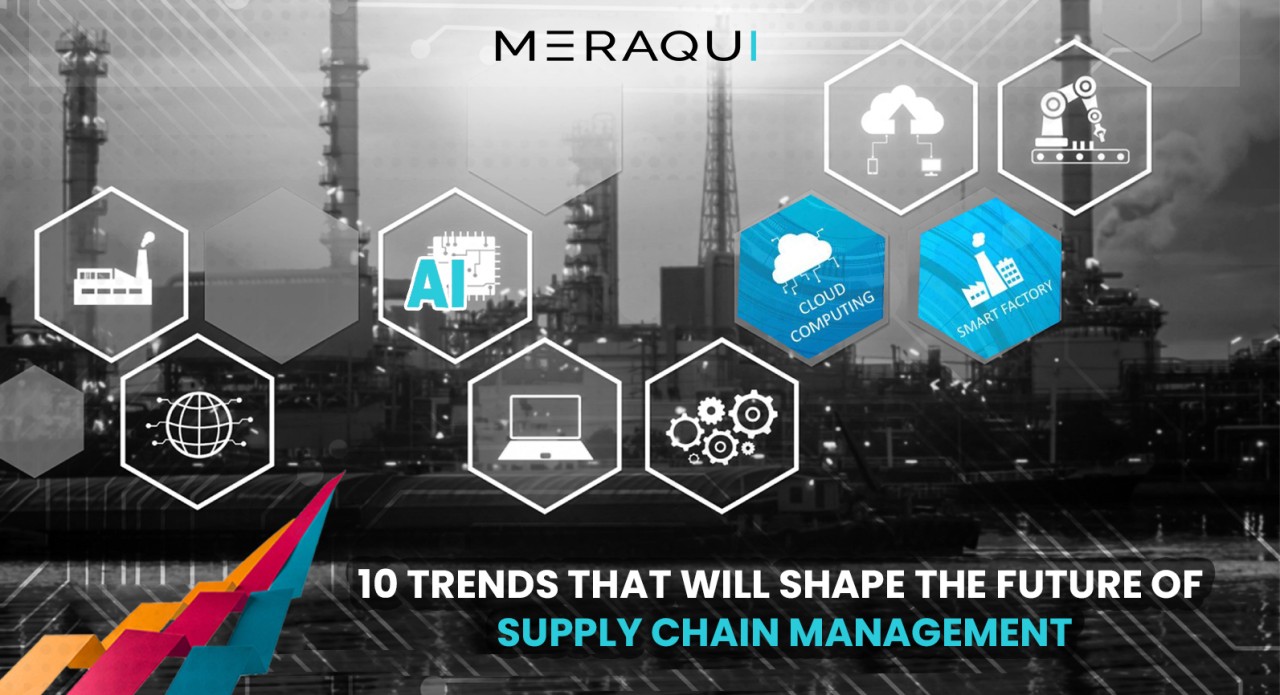
10 Trends that will shape the future of Supply Chain Management!
Supply Chain Management is an integral component of today’s hashtag#economics atmosphere and therefore has to be an efficient and updated process. With the ever-changing world of business and technology, it is imperative to tweak the supply chain process by introducing required changes in line with current global scenario. This article discusses in depth the 10 hashtag#trends that will shape the future of hashtag#SCM.
- Artificial Intelligence- AI is the hashtag#technology which involves simulating human intelligence using hashtag#machines, especially computer systems. hashtag#AI is an underrated way of making supply chains much more efficient and error free. It can be used to refine pricing strategies by studying and predicting consumer behavior in response to market changes, analyze current trends and patterns and predict future outcomes, make improvements in the assembly line, intelligent sourcing, supply chain tracking, inventory management, etc.
- Cloud-Based Solutions- In today’s ever-changing world, the global market has become a very dynamic and volatile place with new problems that can’t be met with a localized and conventional approach. In such cases, not only are cloud-based hashtag#solutions such as various cloud softwares efficient but also crucial to cope with the fast-paced world of hashtag#business and hashtag#technology. When data is stored in cloud, an organization can access that data at any given point of time from anywhere in the world.
- Robotics and Automation- Robotics and automation are a very integral factor in ensuring an organization’s success. They are useful in assigning mundane tasks to machines instead of humans which helps a company’s human resources focus more on other parts of the supply chain management process. RPA or hashtag#Robotic Process hashtag#Automation is a technology that allows the automation of certain repetitive tasks such as data entry, document processing and order tracking, thereby reducing manual labor and increasing efficiency in the supply chain process. Autonomous mobile robots (AMRs) is another technology that can transform supply chain trends by boosting customer satisfaction, strengthening productivity, improving fulfillment processes, and enhancing efficiency.
- Blockchain- This technology can be used to form accurate records that give users valuable transparency into all their transactions with accurate time stamps. #Blockchain’s database structure can increase the chances of a supply chain’s success with the help of end-to-end transparency. Some common benefits of using blockchain for hashtag#SCM are- improvement in material tracking, reductions in paperwork and administrative processes, increased transactional security and visibility with suppliers and subcontractors, better fraud detection and prevention for high-value items.
- Circular Supply Chain- Earlier, supply chains were always viewed as linear, which started from procuring raw materials after which the goods flow in a straight line throughout the supply chain until they are converted into finished products. The idea is to create a closed-loop hashtag#supply hashtag#chain that is more sustainable and efficient, which is important in today’s increasingly environment conscious era wherein organizations are finding ways to reduce their carbon footprint. Therefore, circular supply chains promote a zero-waste environment. Apart from the obvious hashtag#environmental hashtag#benefit, there is an economic advantage too. It also helps organizations to save more money on reduced storage, transportation, and administrative costs, too.
- Capacity Crunch- Transportation is a major part of SCM. The constant need for product transportation means an increase in revenue, but that comes with major hashtag#logistics hashtag#challenges. A truck breaking down or going out of service can cause a major blow to the supply chain. It’s necessary to keep track of business processes in an agile way that can keep up with changes in the market.
- Cybersecurity- As supply chains become more and more hashtag#digitalized in response to global needs, they are also at a greater risk of their data privacy getting compromised. And therefore, business and organizations will focus more and more on enhancing cybersecurity to provide immunity against hashtag#security breaches.
- Risk Management- The world is becoming more and more unpredictable with changes coming in at every corner, so, no one can ever predict political events or a pandemic but hashtag#companies can prepare themselves better to hashtag#deal with such eventualities by focusing on risk hashtag#management in the supply chain. For example, sourcing raw materials from a politically stable area.
- Post-Pandemic Resilience- During the terrible Covid-19 hashtag#pandemic of 2020, most supply chains were thrown into a state of disorder due to events such as continuous lockdown, school and office closures, hashtag#economic restrictions, etc. Since the onset of the pandemic, in fact, most reports show a very volatile supply chain pressure index. To deal with such unforeseen circumstances, companies need to start assessing hidden hashtag#risks and take appropriate corrective hashtag#measures.
- Sustainability- With most governments focusing on climate action, companies must follow suit regarding hashtag#sustainability issues. Some measures that companies can take to ensure the sustainability of their business are- identifying an eliminating the biggest threats to sustainability in their work, revamp packaging designs, switch to alternative hashtag#energy resources, improve waste management, use hashtag#environment-friendly materials, hashtag#work and collaborate with sustainable suppliers and partners, improve transportation, improve the inventory levels, etc.
Conclusion
To conclude, one can say that while supply chain management is a process that’s here to stay, it has to be changed for the better constantly by imbibing latest hashtag#technologies to make it more efficient and capable of catering to present and future needs of the global economy.



Leave a Reply